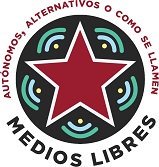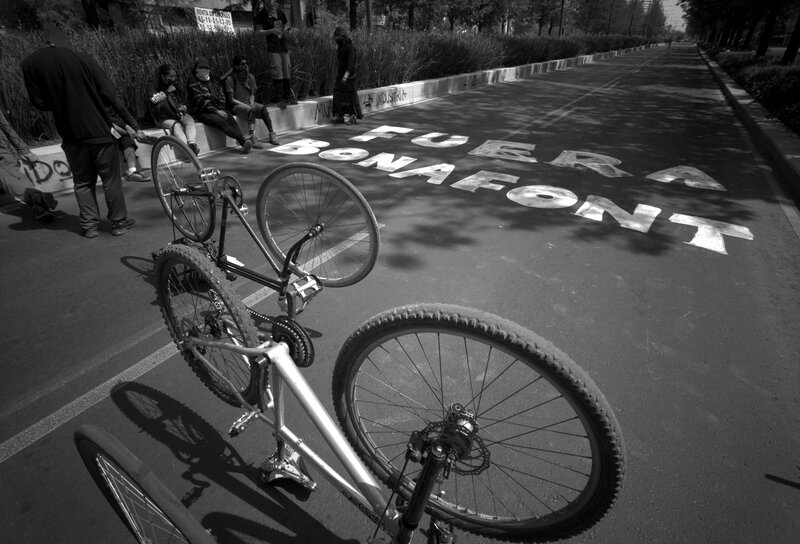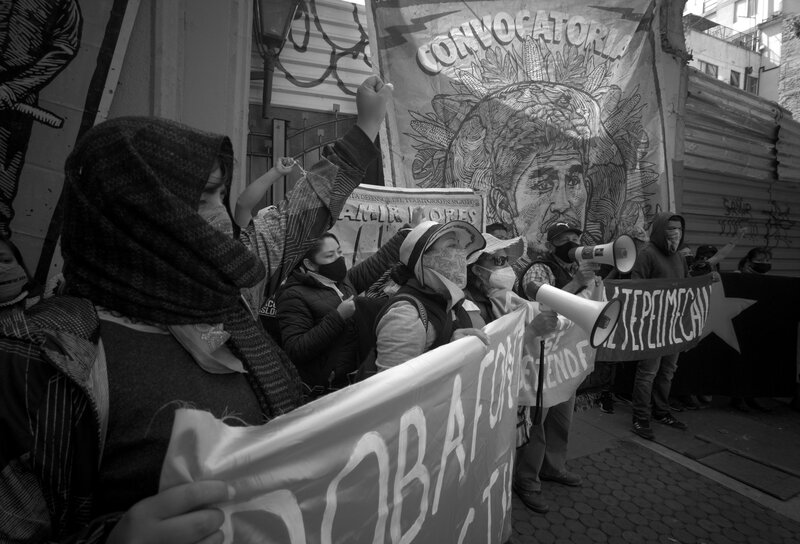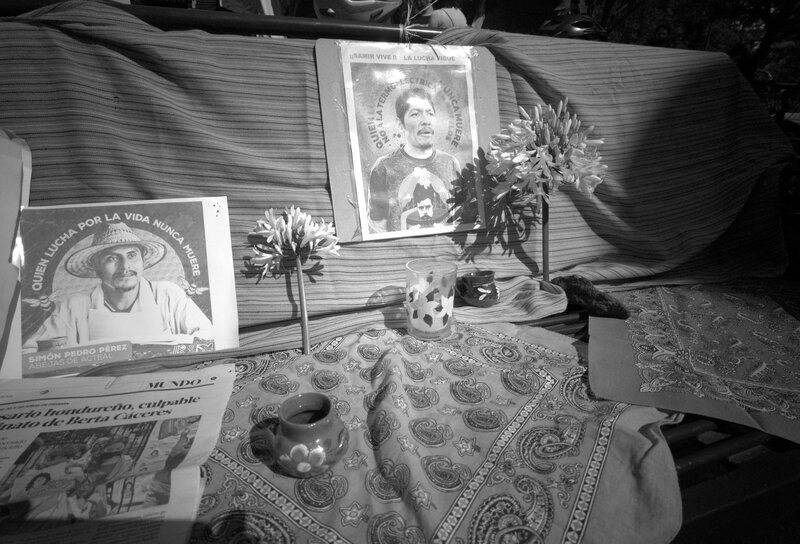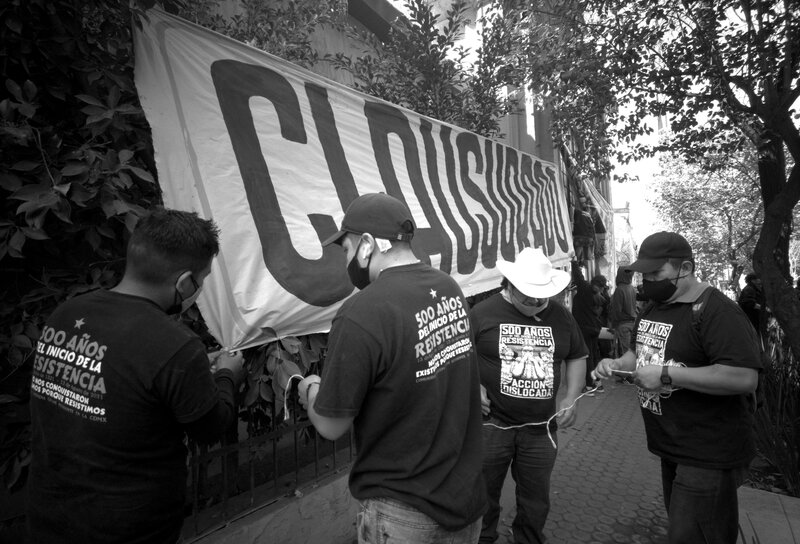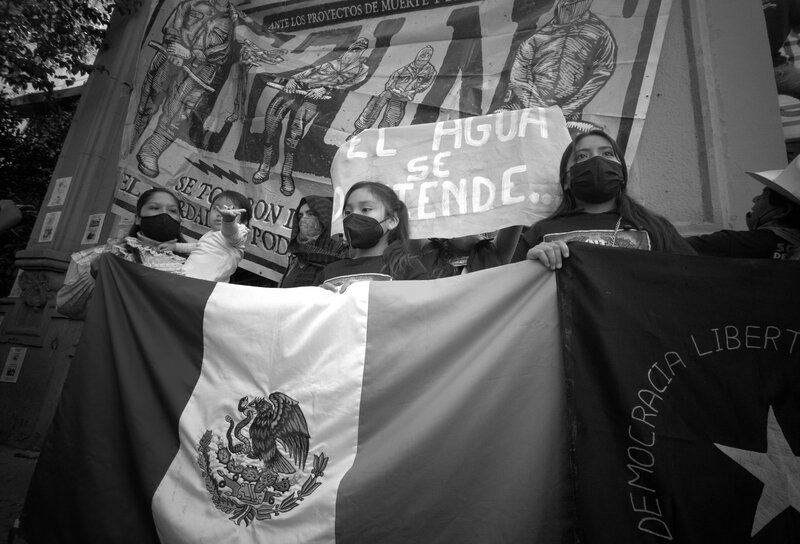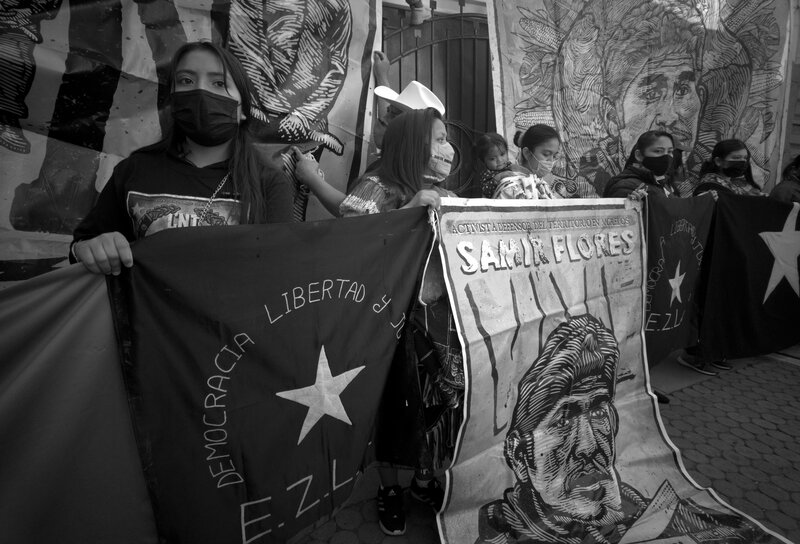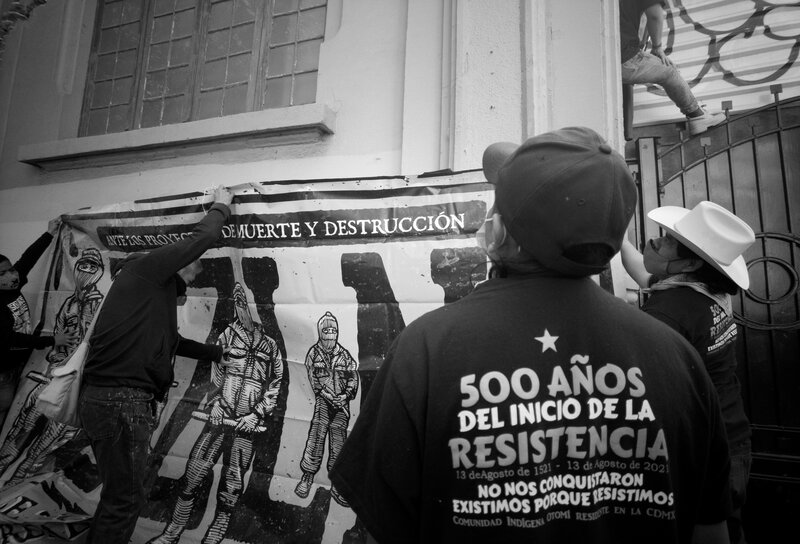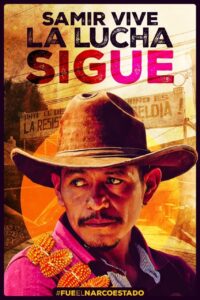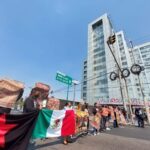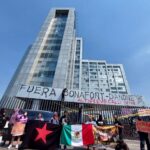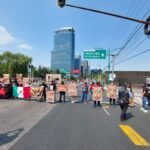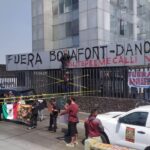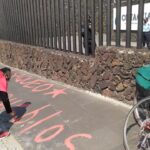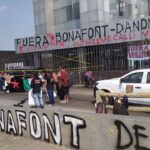Sorry, this entry is only available in Español. For the sake of viewer convenience, the content is shown below in the alternative language. You may click the link to switch the active language.
Decenas de organizaciones se reunieron frente al abandonado edificio de la representación del gobierno de Puebla en la ciudad de México para protestar en contra de la empresa Bonafont, perteneciente a la trasnacional Danone. El acto fue parte de las acciones dislocadas convocadas en todo el mundo contra el despojo del agua y en conmemoración del tercer aniversario del asesinato de Samir Flores, quien sostuvo una lucha en contra del megaproyecto de la termoeléctrica en Huexca y del proyecto integral Morelos.
El pasado 15 de febrero en horas de la madrugada, la Guardia Nacional, junto con la policia estatal y la policia municipal de Juan C. Bonilla, desalojaron a los Pueblos Unidos de la región Cholulteca que habían tomada la planta de la empresa Bonafont desde el pasado 22 de marzo de 2021 tras el depojo del agua de la región durante más de 29 años.
Los pueblos cholultecos, cansados del despojo, con sus ameyales, jagueyes y rios secos por una explotación de los recursos hídricos de la región, decidieron retomar el control sobre el agua.
Pronunciamiento de los Pueblos Unidos de la Región Cholulteca y los Volcanes:
COMUNICADO DE LOS PUEBLOS UNIDOS RESPECTO A LA VIOLENCIA QUE EJERCIÓ EL GOBIERNO MUNICIPAL, ESTATAL Y FEDERAL EN BENEFICIO DE LA TRANSNACIONAL BONAFONT DANONE EN JUAN C. BONILLA, PUEBLA
Al pueblo de México
A los pueblos del mundo
A quienes con el corazón abajo y a la izquierda han compartido nuestro dolor y nuestra rabia
En la madrugada del 15 de febrero los gobiernos que dicen representar al pueblo y ser distintos a los gobiernos anteriores enviaron a la Guardia Nacional, a la Policía Estatal y Municipal a despojarnos del espacio que habíamos recuperado y convertido en una verdadera Altepelmecalli, una Casa del Pueblo, para dejarlo nuevamente en las manos de quienes nos roban el agua, la vida, y que creen que nuestra dignidad está en venta.
El Altepelmecalli no es sólo un espacio abierto a la escucha y al encuentro de todos los pueblos del mundo, es el lugar desde el que los veinte Pueblos Unidos de la región Cholulteca y de los volcanes dijimos ¡YA BASTA! El mismo grito que acompaña a todos los pueblos cuando la ambición y la crueldad de los dueños del dinero y los caciques del poder no deja más opción que la rebeldía.
Dijimos basta al saqueo y secuestro del agua que le da vida a nuestras comunidades y a territorios mucho más allá del nuestro. Dijimos basta a las estrategias del gobierno de desgastarnos con engaños burocráticos y promesas mentirosas. Dijimos basta a estar sometidos a decidir entre ser siervos o víctimas de las empresas transnacionales como Danone que creen que nuestros territorios son solo mercancías para hacer crecer eternamente sus fortunas. Dijimos basta, lo reafirmamos en nuestro decreto en protección a la madre tierra y lo seguimos diciendo con toda claridad: BONAFONT SE VA.
El desalojo ha revivido el riesgo de que Bonafont y sus patrones de Danone vuelvan a secuestrar nuestra agua. El gobierno trata de escudarse en la ley para justificar que nos despojen, porque para eso sí usan la ley, no para protegernos, no para cuidar a nuestras comunidades y a nuestros territorios. Al gobierno le incomoda y aterroriza que todo el mundo se entere del trabajo por la vida que construimos los pueblos y que reproducimos en la Altepelmecalli. Le da miedo que todos se enteren de que no los necesitamos porque la Altepelmecalli atenta contra la sagrada propiedad privada del capital y pone en entredicho a las instituciones y leyes que fueron hechas para el servicio de los grandes empresarios. El gobernador de Puebla, Luis Miguel Barbosa Huerta ahora, después del desalojo, llama al diálogo, pero como el mismo lo dice, lo hace para que la empresa pueda volver a funcionar, para que el saqueo vuelva a la normalidad. El gobierno de Puebla no es un mediador en este asunto, es parte, actúa como el representante de los intereses de Bonafont y Danone, mientras el presidente Andrés Manuel López Obrador guarda un silencio cómplice.
A pesar de la rabia y el dolor que sentimos de ver que nuestra vida se pone en manos de quienes comercian con ella, estamos dispuestos a antes que cualquier otra acción, darle una oportunidad a la palabra, a sentarnos en una mesa e intentar dialogar. No estamos aceptando ni invitando una negociación para ponerle precio a nuestra dignidad. Los estamos invitando, una vez más, como aquel día 22 de marzo o el día 8 de agosto de 2021 a presentar nuestras demandas legítimas por la vida y el bienestar de nuestros pueblos.
Estamos dispuestos a un diálogo que permita que nuestra región se mantenga en paz, que permita que nuestra región tenga lo que necesita para que nuestras comunidades vivan y podamos decidir nuestro destino, que permita que Bonafont se vaya de nuestros territorios y nuestra agua y nuestra tierra siga protegida por quienes la hemos protegido durante siglos, como lo estamos haciendo ahora.
Estamos dispuestos al diálogo porque como pueblos no tememos a la honestidad y estamos dispuestos a dar muestras de que nosotros no somos quienes tienen oídos sordos. Pero para que exista el diálogo así como nosotros damos la muestra y el primer paso exigimos que:
1. La empresa Bonafont tenga suspensión de cualquier actividad en la zona.
2. Que no exista persecución a los defensores y ambientalistas de los Pueblos Unidos.
3. Por el respeto a la vida, exigimos que sean liberados inmediatamente los animales que se encuentran al interior de la Altepelmecalli.
4.Que en ese espacio para la palabra y escucha estén presentes los representantes federales y estatales de la Comisión Nacional del Agua (CONAGUA)
5. Que se encuentre presente María Luisa Albores González, secretaria de Medio Ambiente por parte del Gobierno Federal y representantes de la Secretaría de Medio Ambiente a nivel estatal
6. Adelfo Regino Montes, Representante del Instituto Nacional de los Pueblos Indígenas
7. Miguel Barbosa Huerta por parte del Gobierno Estatal y
8. por parte de la trasnacional Danone, el director general de Bonafont, Mariano Perotti.
Exigimos que este sea un diálogo público. No aceptamos que la postura del gobierno sea que es un asunto entre Bonafont y nosotros, porque con el uso de las fuerzas armadas y policiales en el desalojo los gobiernos se volvieron parte.
Proponemos y hacemos un llamado a la Universidad Iberoamericana – Puebla para que, a través de sus instancias e instalaciones pueda fungir como mediadora dentro de este conflicto socioambiental.
Como Pueblos Unidos, a partir de lo que pueda surgir del diálogo, haremos una autoconsulta en las veinte comunidades que somos, para reafirmar la decisión de los pueblos y definir cuál será nuestro camino.
Invitamos a todos los pueblos, comunidades, barrios, organizaciones, colectivas, grupos, familias y personas a acompañarnos en las acciones globales por la defensa del agua, a la Caravana Por La Vida y la Madre tierra, a las manifestaciones estatales y nacionales, a los mítines y asambleas que tendremos a los largo de las comunidades que conformamos los Pueblos Unidos de la región Cholulteca y de los volcanes y que estaremos calendarizando próximamente.
ATENTAMENTE
A 20 de febrero de 2022
AGUA TIERRA Y LIBERTAD
PUEBLOS UNIDOS DE LA REGIÓN CHOLULTECA Y DE LOS VOLCANES
¡Samir Vive, la lucha sigue!
¡Zapata Vive, la lucha sigue!
¡Viva la Altepelmecalli!
¡Vivan los pueblos unidos!
